On the Internet you can find many indicators and strategies for binary options that were created by different traders. Not all of them do work, so in this article we will look at how to create an effective strategy for binary options and what is needed for this.
Content:
- What do you need to create a strategy for binary options;
- Stage 1: choose a binary options strategy style;
- Stage 2: select indicators for the binary options strategy;
- Specifications;
- Work algorithm;
- Stage 3: selecting technical components for the trading system;
- Asset selection;
- Selection of time frame;
- Selection of expiration date;
- Signal correlation;
- Stage 4: testing the strategy for binary options;
- Conclusion.
What do You Need to Create a Binary Options Strategy
Creating a strategy involves conducting analysis and collecting all kinds of data that will help you understand what should be included in your system. First, you will need to decide on the type of trading strategy to be created. It may be:
- signal;
- trending;
- based on levels;
- mixed;
- without indicators.
When creating, you should also pay attention to:
- Indicators. The more indicators you can analyze, the higher the chances that you will find ones that are right for you. The strategy can be based on trend indicators or indicators of support and resistance levels;
- Strategies. Looking through ready-made strategies, you can choose indicators that are not available separately, or take something as an idea;
- Trading methods. By studying different approaches to trading, you can supplement your system with effective techniques that will be used when making transactions;
- Trading screenshots. Screenshots from traders can also help with ideas for implementing your strategy.
To create your own strategy for binary options, you should also decide which instruments are suitable for your specific trading style. That is, it is important to understand which signals will be effective for short- or long-term binary options trading.
Stage 1: choosing a binary options strategy style
As mentioned earlier, the strategy can be:
- signal;
- trending;
- based on levels;
- mixed;
- without indicators.
Beginners may immediately discard strategies without indicators and based on levels, since they require experience in binary options trading and can cause difficulties. Signal, mixed and trend strategies can be very simple and therefore suitable for all traders. It is worth noting that most often all systems are mixed and only in some of them, indicators of the same type are predominant.
Signal strategies consist mainly of signal indicators, which can appear in the form of arrows, dots and other symbols. An example of such a system would be Flash-FX Scalper :
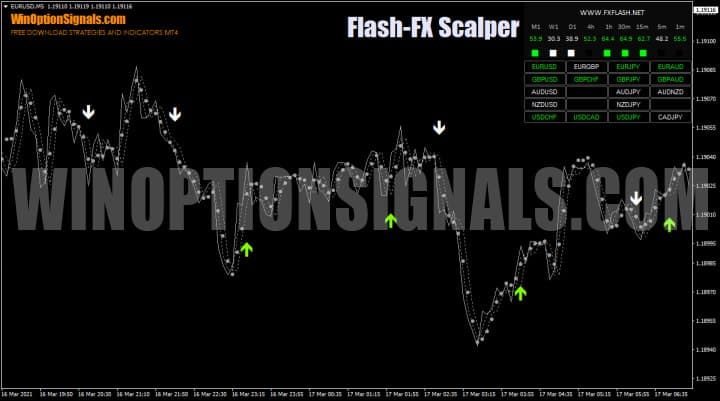
Trend strategies are based on a trend and all transactions are made only if there is a directed movement in any direction. During a flat, trading using such systems is not very useful. An example of a trend strategy is FX Dart :
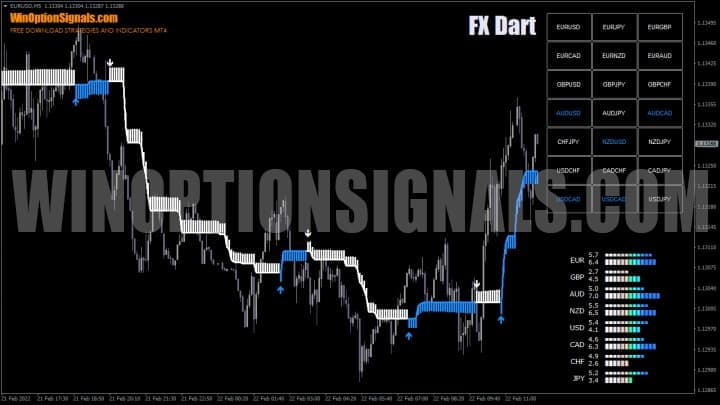
Speaking of mixed strategies, they can use trend, information and signal indicators, as well as levels. An example of such a system is DJ Market PRO :
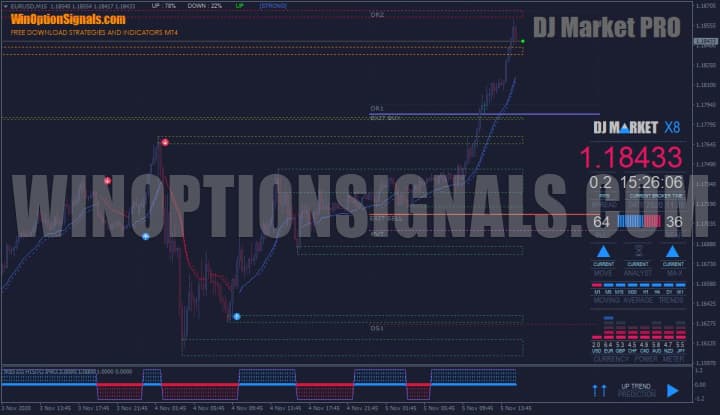
Trading systems without indicators may involve trading on a blank chart or trading based on levels that the trader builds independently. Price action , graphical analysis and candlestick analysis can also be used. Pattern trading can be effective, but it requires learning each pattern, which takes time and experience, so beginners are better off starting with simpler approaches and building their systems from there.
Stage 2: selecting indicators for a binary options strategy
It is possible to select effective indicators only after many of their types have been reviewed. For a complete understanding, it will be necessary to study the technical characteristics (settings) and, if possible, understand the algorithm of their operation.
Specifications
Using the Stochastic Oscillator as an example, let's look at its settings. The main ones in this case are the %K period, the %D period and deceleration:
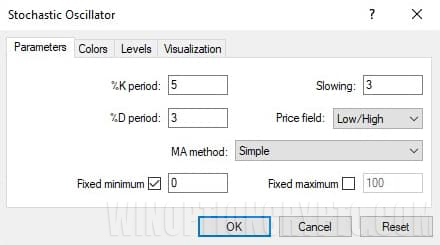
We will compare different variables to understand how trading signals will differ. For example, let's take the basic settings (5-3-3) and our own (15-3-9). Basic settings are more “sensitive” to quotes and react to all price fluctuations, while our settings are lagging and their signals are not as accurate. As signals, we took the usual intersection of overbought and oversold levels:
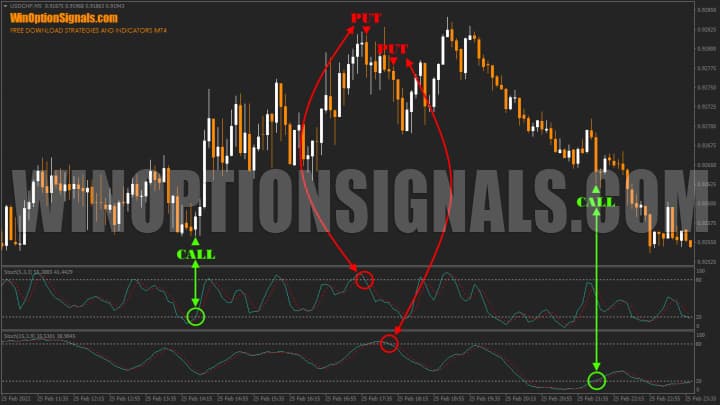
In exactly the same way, it is worth checking other indicators, comparing their settings and selecting the best ones. An exception may be indicators in which the settings cannot be changed.
Exactly the same example, but with a signal indicator. In one image, the first variable is "10" and the second is "30". Thanks to this, you can immediately see the difference in the number and accuracy of signals. This once again shows why it is necessary to carefully study any of the selected tools:
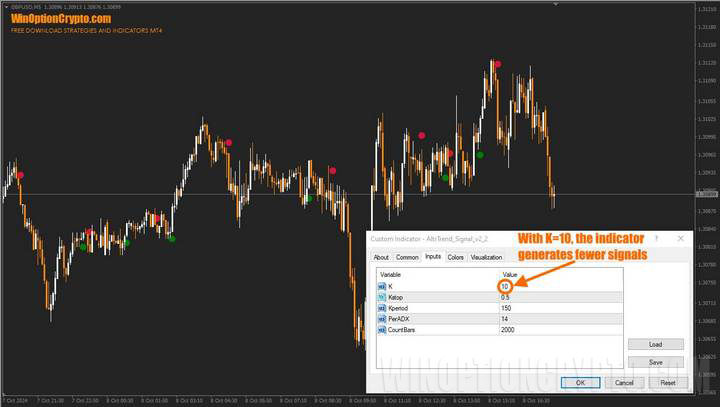 |
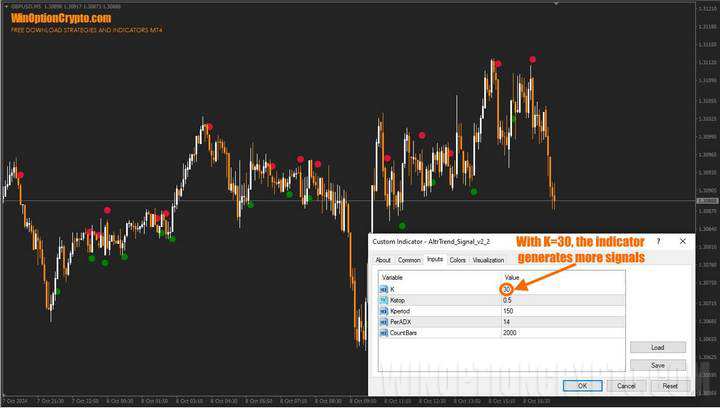 |
Work algorithm
I would also like to note the second point, since very often you can find indicators that, for example, are based on moving averages , but at the same time they look different. The Trend Lock System v1 strategy is exactly that. It disguises the usual SMA under the guise of accurate signals:
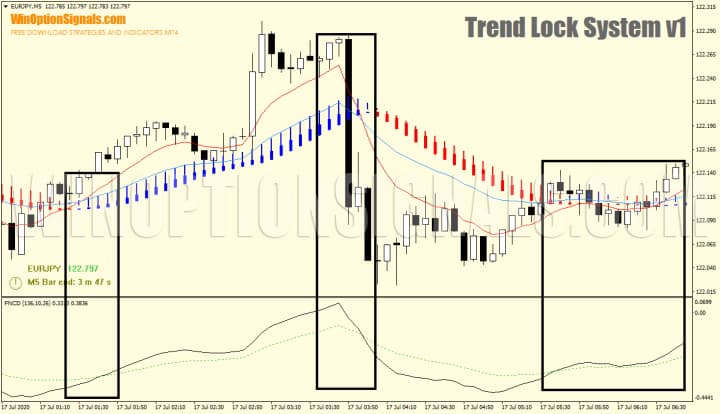
Stage 3: selecting technical components for the trading system
Let's assume that you have studied everything you need and selected the tools you will use in your new strategy. Regardless of what it consists of, you will need:
- Select an asset for trading;
- Choose a timeframe ;
- Select expiration ;
- Check the correlation of indicator signals.
Asset selection
You should trade a small number of assets. Otherwise, attention is “sprayed,” which reduces the effectiveness of any technique. It is optimal if a trader chooses a small number of assets, or even better, choose one that can be studied thoroughly.
Honest binary options brokers offer a variety of financial instruments. Some assets are characterized by increased volatility , others are more “sluggish”. But in each case, with the right approach, you can make money. However, by selecting a small number of assets, a person over time begins to understand how quotes are formed and what influences prices. This makes it easier to predict what will positively impact your bottom line in the future.
Beginners should pay attention to currency pairs , as their behavior is the easiest to predict. Another advantage of currencies is that there are quite a lot of them and everyone will choose the right one for themselves:
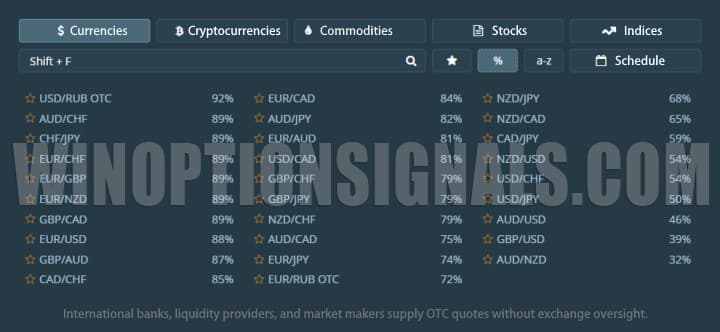
Time frame selection
Before choosing a time frame, you need to answer the following questions:
- what type of trading suits you - short-, medium- or long-term;
- how much time are you willing to spend waiting for a signal (the higher the timeframe, the fewer signals).
Depending on the responses received, appropriate timeframes are selected. When working with short-term contracts, M5 and M15 charts are used. But please note that at such time intervals you can often observe “market noise”, which you should be prepared for.
For medium-term contracts, time intervals M30 or H1 are suitable. In this case, the effectiveness of indicators increases and provides more accurate signals.
Long-term binary options trading is carried out on timeframes from H4 and higher, but it is worth noting that not all brokers allow trading with expirations longer than 4 hours. Also, such trading is not suitable for beginners, since it is more difficult to predict price behavior for such a long period than for a shorter period.
The most common timeframes for binary options brokers are:

Selection of expiration date
Expiration dates are selected based on:
- volatility;
- the nature of market behavior;
- presence/absence of strong news and other factors.
- timeframe.
That is, the order execution time is selected separately for each specific case. You cannot “blindly” set the same expiration every day, without paying attention to the market situation.
The types of expirations most often found with brokers are:
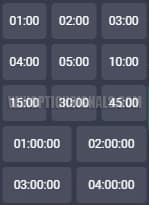
Signal correlation
Once you have chosen the instruments that you are going to use in the strategy you have created, you should check how correlated the signals are with each other. To make it clearer, let’s take an example of the rules of the Cluster Trader System strategy . The rules for trading on it are as follows:
Call Options:
- (Optional) The MTT indicator was green, which would indicate an uptrend.
- The level to which the price will approach should be blue (support/demand).
- A green arrow with the text TC Buy should appear.
Put options:
- (Optional) The MTT indicator was red, which would indicate a downward trend.
- The level to which the price will approach should be red (resistance/supply).
- A red arrow with the text TC Sell should appear.
In the example below, there is a situation for buying Call options, where you can see how the signal appears exactly at the level, which means the correlation of the signals is high:
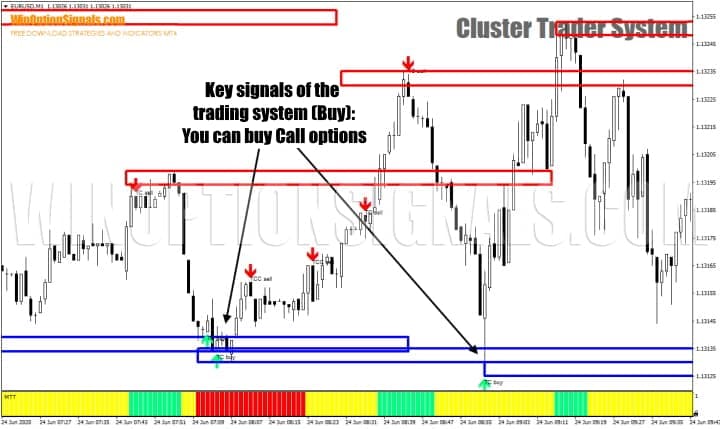
An opposite example is the situation with Stochastics, shown earlier, where different parameters gave completely different signals and did not correlate with each other.
Stage 4: Testing the Binary Options Strategy
You can understand how effective a strategy is only after testing it on a demo account . In this case, traders gain experience in binary options trading, which will also be useful for improving their trading system. By testing strategies and indicators on a demo account, you will be able to:
- understand how much profit the strategy can bring;
- better understand the rules for buying options;
- study the principles of operation of your signals;
- find flaws in the trading system;
- improve strategy.
In this regard, you should first trade on a demo account with a broker, with which you can find out all the factors described without risking your own funds.
Conclusion
After going through all four stages, you will be able to create a working version of the strategy for binary options, which can be used in trading on a real account. Most likely, over time you will still refine and improve it, but the basis itself most likely will not change.
The above recommendations will help you create an effective trading strategy. But after this, you should test the chosen approach on a demo account, and then on a small deposit and small investments. This method helps determine the amount of profit and loss when using a specific tactic with minimal losses.



To leave a comment, you must register or log in to your account.